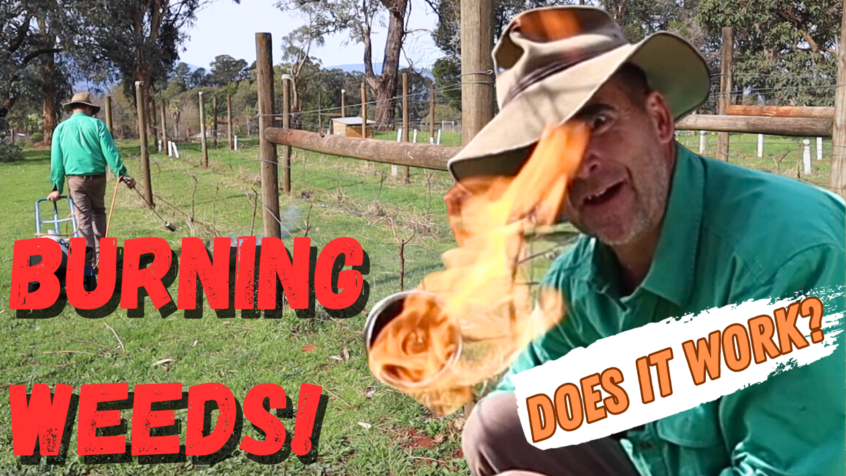Flame Weeding: Sustainable Weed Control

Introduction:
In the world of vineyards, weed control is a top priority. Weeds not only compete with vines for essential nutrients but some can even release toxic chemicals that stunt vine growth. While chemical herbicides are often used for weed management, there is a growing concern about their impact on the environment and food safety. In this blog post, we explore an alternative and eco-friendly method of weed control in young vineyards – flame weeding.
The Challenge of Weed Control:
Weeds in vineyards pose a significant challenge. They not only compete with vines for nutrients but can also harbour pests and diseases. Some weeds, like paspalum and cooch, release toxic chemicals that hinder vine growth. Traditional methods of weed control include cultivation, herbicides, and mulchers. However, these approaches have their downsides. Cultivation can harm the soil structure, herbicides raise concerns about chemical residues, and mulchers may not be suitable for every situation.
Introducing Flame Weeding:
Flame weeding is an innovative and sustainable weed control method that has gained popularity among vineyard owners and farmers. It involves using controlled flames to burn weeds, eliminating the need for chemicals and minimizing soil disruption. In this blog post, we’ll explore the effectiveness and economics of flame weeding using two different kits from Weldclass.
Two Flame Weeding Kits:
Weldclass offers two kits – the Combo Kit and the Max Flame Kit. These kits provide eco-friendly solutions for weed control in vineyards. Let’s take a closer look at the features of each kit:
Combo Kit:
Includes a gas regulator to reduce gas bottle pressure.
Provides a longer hose for added convenience.
Equipped with a smaller tip for precise, fiddly jobs.
Ideal for workshop use and versatile applications.
Max Flame Kit:
Features a direct gas bottle connection with higher pressure.
Offers a shorter hose length but more gas pressure.
Simplified design for straightforward use.
Suitable for heavy-duty weed control tasks in the vineyard.
Using Flame Weeding for Weed Control:
Flame weeding is a user-friendly method that offers efficient weed control. Here’s how to use the kit:
Turn on the gas supply.
Set the ignition source.
Adjust the pilot flame.
Begin flaming the weeds.
Safety Precautions:
Avoid using flame weeding during high fire risk periods.
Maintain a safe distance from flammable materials.
Ensure that you have proper fire suppression measures in place.
Results and Benefits:
After flame weeding, results are visible within days. Weeds start to wither and die, leaving the vine rows weed-free. The method not only eliminates the need for herbicides but also provides unexpected benefits like snail control, as shown in the experiment. The roots of grasses do not die, and the process has to be repeated more regularly than herbicide, but if correct grass species are introduced this is not of great concern.
Gas Usage:
An essential consideration is the amount of gas used during flame weeding. The gas consumption depends on the kit used, the duration of flaming, and the area covered. Proper maintenance, such as greasing, ensures optimal performance and efficiency.
Conclusion:
Flame weeding is emerging as a sustainable and effective weed control method for young vineyards. It offers an eco-friendly alternative to chemical herbicides, minimises soil disturbance, and provides visible results within days. By adopting flame weeding, vineyard owners can promote a healthier, more sustainable approach to weed management. Stay tuned for more insights and tools to simplify your agricultural practices and enhance your vineyard’s productivity.